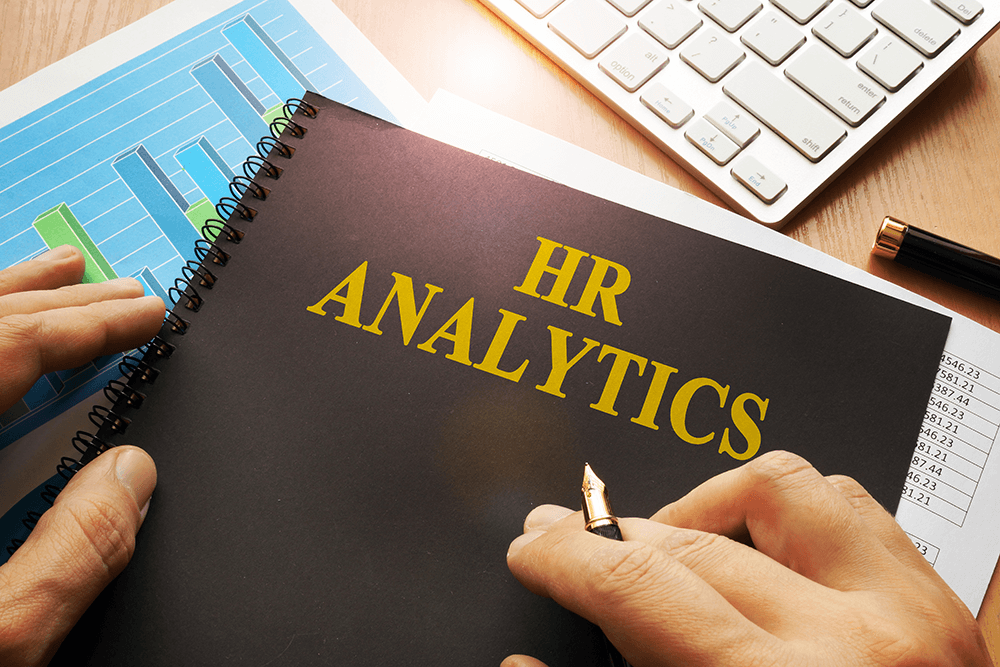The 3 Vital Ways HR Teams Should Be Using Data
2 July 2021
Any average HR department is rich in data. Personal employee data, recruitment data, and performance KPIs are just a few examples of the kinds of data a typical HR team is sitting on. Now, as our world becomes increasingly ‘datafied’, HR teams have more opportunities than ever before to capture and analyse data, which has given rise to the terms ‘data-driven HR’ and ‘intelligent HR’.

But what are the smartest ways to use all this data, and make HR more data driven? There are infinite ways to use data, but, in their most basic sense, they boil down to three main categories: using data to make better decisions, using data to better understand your customers and using data to improve operations.
These three categories are just as applicable in the world of HR as they are for, say, marketing or sales. Let’s look at each category in turn.
1. Making better decisions
More and more business teams are building cultures of data-based decision making, as opposed to basing decisions on gut feeling or how things have always been done. HR is no different. Data-driven HR, the theme of my new book, is all about making HR smarter, and making smarter decisions is a critical part of this. There are two key strands to making better HR-related decisions. The first is the HR team itself making better decisions about its own activities and people-related challenges (such as, finding ways to make recruitment and performance reviews smarter).
Here’s a great example of data-driven HR decision making in action. Analysts Gartner compiled a study for a US financial services company that examined the performance of employees within their first two years at the company. What they found was that, while all the best performers had a degree-level education, their individual grades and the particular school or college they attended had no bearing on their success or failure. The company went on to implement entirely new screening processes that gave no weight to the ranking of the college attended, or the grades attained. Instead, they favoured those who had completed any college course, and gone on to demonstrate success in a job after college. The business increased their revenues by $4 million in just six months.
The second strand is the HR team helping others in the organisation to make better decisions using people-related data. After all, leadership teams need HR- and people-related data to make their own decisions, and the intelligent HR team is well equipped to support this process. But there may also be other functions within the business that could make meaningful improvements if they only had access to the right data.
For example, tools like Glint’s employee feedback app allow companies to access real-time insights on how people are feeling about their work and employer. From the range of vegan food options in the canteen, to the quality of corporate communications over a recent merger, such feedback tools can deliver valuable insights to those across the business who need them.
2. Understanding your customers
Every time Netflix recommends a new TV series you might like, or Spotify recommends an artist you’ve never heard of, it’s because they’ve analysed your activities and gleaned useful information about your behaviours and preferences. They understand what makes you tick (better than you might be comfortable with!), and can therefore meet your needs more effectively. Even a humble customer satisfaction survey is an example of using data to better understand customers. So, it’s no wonder this is one of the most common uses of data.
If you’re a HR professional, your customers are first and foremost the organisation’s employees (and, to some extent, the leadership team). So, the more you can understand your customers, the better you can serve them.
There is both an internal and an external side to this category. Internally, the HR team can use data to better understand employees, including how happy they are, how engaged they are, how safely they’re working and so on. For example, many businesses are using short ‘pulse’ surveys to measure how staff are feeling on a monthly, weekly or even daily basis. This allows them to accurately gauge levels of staff engagement, without the need for traditional costly and time-consuming staff surveys.
Externally, data can help the HR team look beyond the organisation and understand its employer brand (using platforms like LinkedIn and Glassdoor). Data can give valuable insights on your company’s perception from the outside, and how to attract the kind of talent you need to succeed.
Clearly, this category has a lot of crossover with making better decisions. Armed with a better understanding of your customers, you can make much smarter decisions on how best to serve them – decisions rooted in data, rather than assumptions. That’s why this category and the first often go hand in hand.
3. Improving operations
Finally, data provides a way for HR professionals to look at their key HR functions – like recruitment, for instance – and answer critical questions like ‘Where do we spend most of our time and effort?’ and ‘How can we streamline and improve these processes?’ Data analysis can help identify areas for improvement, and ways to optimise processes.
Increasingly, this is about automating as much as possible, which largely means putting internal systems in place that allow you to automatically make use of people-related data or perform certain functions.
But this category isn’t all about automating processes and replacing HR professionals with algorithms. In its broadest sense, it’s simply about looking at key processes and activities, understanding what the HR team spends its money and time on, and looking at how to make those processes better.
One HR function that’s becoming increasingly optimised by data is employee safety and wellbeing. One great example comes from Fujitsu’s Ubiquitousware package, which collects and analyses data from devices such as accelerometer sensors, barometers, cameras and microphones to measure and monitor people as they go about their work. Data such as temperature, humidity, movements and pulse rate can be used to identify when workers are exposed to too much heat stress, for instance. The system can even detect postures and body movements to sense a fall or estimate the physical load on a body.
Read more about how data and analytics can help you make better decisions, understand your customers, and improve operations in Data-Driven HR. It’s packed with real-life examples and practical ways HR teams can deliver maximum value in our increasingly data-driven world.
Related Articles
Why The AI Supercycle Will Fail Without Advanced Networks
By now, “smart” versions exist of just about every home appliance, gadget and gizmos we can think of. However, manufacturers continue[...]
The Two-Tier AI Economy: Why Half Of Companies Are Being Left Behind And How To Close The Gap
By now, “smart” versions exist of just about every home appliance, gadget and gizmos we can think of. However, manufacturers continue[...]
Sign up to Stay in Touch!
Bernard Marr is a world-renowned futurist, influencer and thought leader in the fields of business and technology, with a passion for using technology for the good of humanity.
He is a best-selling author of over 20 books, writes a regular column for Forbes and advises and coaches many of the world’s best-known organisations.
He has a combined following of 4 million people across his social media channels and newsletters and was ranked by LinkedIn as one of the top 5 business influencers in the world.
Bernard’s latest book is ‘Generative AI in Practice’.






Social Media